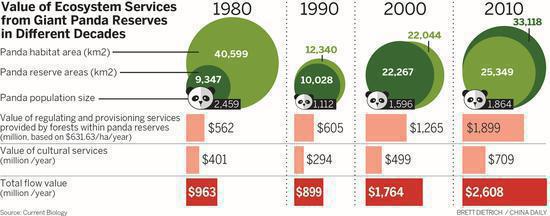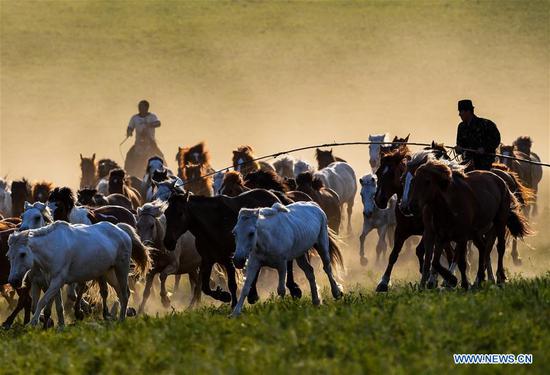
The researchers looked at a range of variables before coming up with their estimates, including carbon storage and the production of resources.
Giant panda reserves offer a variety of ecosystem services that are valued by local people, according to Wei. The reserves are used to grow crops, graze animals, procure water supplies, and harvest firewood.
The reserves play a role in the management of water runoff, retention of sediments and nutrients, and in carbon sequestration. The research also factored in the cultural value of the panda.
“Now, we know that the system of reserves and protections are working to reverse the panda’s decline and that these efforts have benefits for society and nature at large,” Wei said.
Charlotte MacDonald, director of conservation and living collections at the Royal Zoological Society of Scotland, did not take part in the study but noted that the panda is an “umbrella species” and panda reserves provide protection for other animal and plant life.
“Giant pandas are in many ways also a flagship for conservation,” MacDonald said. “Safeguarding their habitats also helps to protect many other animals they live alongside.”
China has stepped up efforts in panda conservation since a survey 28 years ago showed a steep fall in the panda population and a dramatic loss of habitat.
A national panda survey in 1990 showed the panda population had more than halved during a 10-year period, dropping to 1,112 individuals. Panda habitat had also sharply decreased, by two-thirds to 12,340 square kilometers.
Since then, the government has protected 33,118 square kilometers of panda reserve and panda numbers have rebounded, to 1,864 individuals.
In 2016, the International Union for Conservation of Nature downgraded the panda from “endangered” to “vulnerable”on the global list of species at risk of extinction.


















































